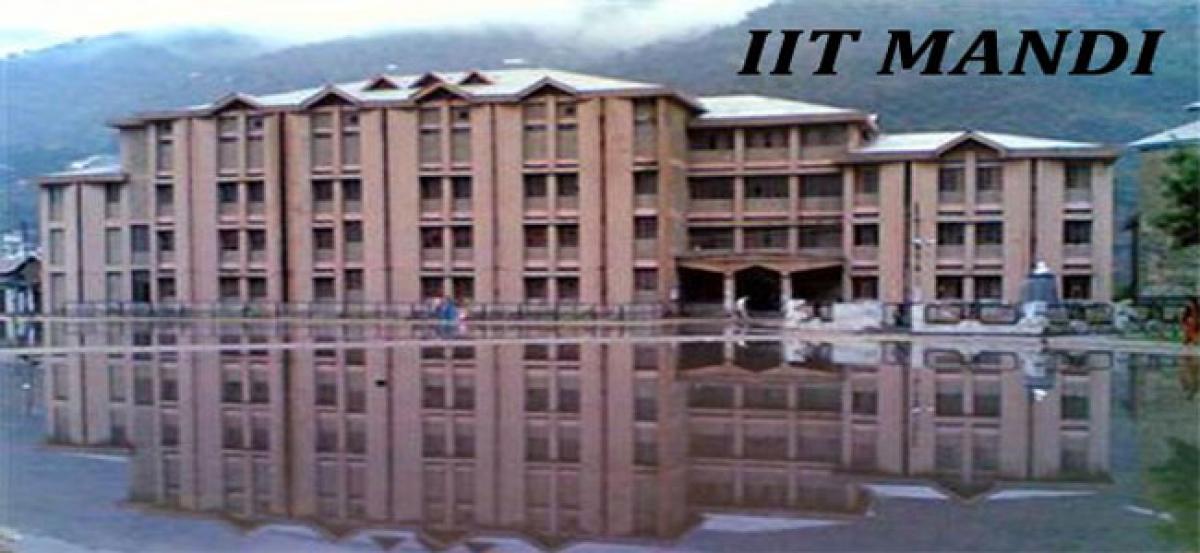Live
- Maha Kumbh Mela: Special arrangements to handle passengers’ influx at rly station
- Kumbh Sahayak App, a digital companion for millions of devotees
- Dr. Veerappa Moily's New Book to be Unveiled in Moodbidri
- Congress begins exercise to pick candidates for MLC polls
- Ensure uninterrupted power supply in summer season: CM
- Public Participation Key to Strengthening Democracy-Annamalai
- MLA Anirudh Reddy gets threat letter from Maoist
- "Awareness Program on Road Safety for Auto Drivers Held in Aija Town".
- MLA Bandla Krishna Mohan Reddy Inaugurates NPL Season-4 Cricket Tournament in Netivanipalli
- Rangoli Competitions Showcase Tradition and Creativity in Gadwal.
Just In

Indian Institute of Technology Mandi has successfully developed a lowcost landslide monitoring and warning system against landslide disasters, which are a common problem in the Himalayan mountain belt
Hyderabad: Indian Institute of Technology Mandi has successfully developed a low-cost landslide monitoring and warning system against landslide disasters, which are a common problem in the Himalayan mountain belt.
Every year, on an average about 200 lives is lost due to landslides in India and INR 550 crores is spent to cover damages to infrastructure. The problem is complicated by the fact that existing landslide monitoring and warning technologies cost crores of rupees, questioning their large-scale deployments over a wide geographical area.
Explaining the same, Prof Varun Dutt, School of Computing and Electrical Engineering at IIT Mandi said, “To address the problem of landslides and to reduce the cost of sensing these disasters, a faculty-student group named, iIoTs, incubated by Indian Institute of Technology (IIT) Mandi’s technology incubator, Catalyst, has developed an indigenously built low-cost landslide monitoring and warning technology. The system, which costs around INR 20,000, can record weather parameters and soil properties.”
Adding to his inputs, Prof K V Uday, School of Engineering at IIT Mandi said, “The system can generate warnings both locally (via blinkers and hooter) and globally (via SMSes) if there are soil movements of different magnitudes in the vicinity of the deployed system.” With support and encouragement from the Mandi district administration, iIoTs recently deployed 10-systems in the Mandi district at different landslide sites along the Mandi – Jogindarnagar and Mandi – Kullu highways.
The systems deployed along the Mandi – Jogindar Nagar highway include the following: one system at Narla village, two systems at Kutropi village, and two systems at Gumma village. The systems deployed along the Mandi – Kullu highway include the following: one system each at Deode, Hanogi, Thalot, Dwada, and Pandoh villages.
These 10-systems constitute one of the largest such deployments in India till now. Each system can monitor soil movement and weather parameters at the deployed locations. These parameters can be perused online on a website in both tabular and graphical formats. Besides, each system has the capability of intimating population at risk about significant rainfall or soil movement events in their vicinity via SMSes.
About the landslide monitoring system:
The landslide monitoring system detects if there is significant soil movement, and then vehicular road traffic can be alerted by the system using blinkers, which have been provided along the road where possible. The blinkers come online for 10-15 seconds with lights and sound each time soil movement is recorded at the deployment site. Recently, at Kutropi, a location that witnessed a massive landslide in the 2017 monsoon season, the system was operational when a massive mud-flow took place damaging the Mandi-Jogindar Nagar highway.
Shubham Agrawal heads the iIoTs team with support from team-members Praveen Kumar, Ankush Pathania, Priyanka Sihag, Pratik Chaturvedi, and Naresh Mali. The team is mentored by IIT Mandi faculty, Varun Dutt (Computer Science and Engineering) and K V Uday (Civil Engineering). The research behind the system has been supported by grants from Himachal Pradesh Council for Science, Technology, and Environment; Defence Terrain Research Laboratory, DRDO; and National Disaster Management Authority.
The iIoTs group has already filled patents on this low-cost technology and published research outcomes from the deployed systems in top academic outlets including, IEEE-Wiley and the Natural Hazards and Earth System Sciences journal. Ahead this year, the iIoTs group is planning to deploy its systems in Sirmaur and other districts of Himachal Pradesh as well as at other landslide-prone locations in India.

© 2025 Hyderabad Media House Limited/The Hans India. All rights reserved. Powered by hocalwire.com







